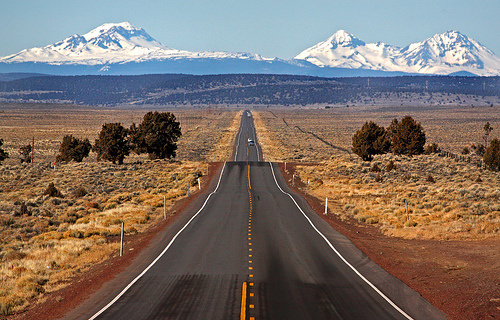There are 2.7 million miles of roads stretching across the United States. On hot days, all that asphalt absorbs warmth from the sun, heating to 140 degrees or more. The energy potential of this phenomenon has not gone unnoticed.
Researchers from the University of Rhode Island are looking into several ways to harness the solar energy potential of roads to melt ice, power streetlights and signs, heat buildings, and feed energy back into the grid.
One approach is to wrap flexible photovoltaic cells around the "Jersey barriers" that divide highways. This technology already exists, and could create enough energy to power streetlights and illuminate road signs.
Another solar road technique involves placing water filled pipes below the asphalt. The heated water could be released onto iced-over roads to melt the ice, piped into buildings to satisfy hot water needs, or converted to steam to power turbines.
A third alternative uses a thermo-electric effect by embedding circuits in the roadways at different depths and temperatures, thereby creating energy that could be used as a road defroster or in a multitude of other ways.
The last approach studied involves replacing asphalt entirely and replacing it with large electronic blocks that contain photovoltaic cells inside. Needless to say, this would be more than a little expensive. But hey, we can dream.
